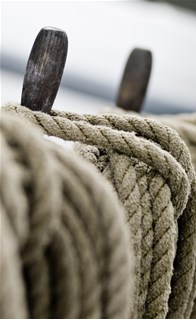|
By: Jeroen Berger, August 22, 2017 For the inland shipping sector there comes a trial with emissions measurement systems as part of the Continuous On-Board Analysis and Diagnosis’ (COBALD) Green Deal. On 13 September 2016, the COBALD Green Deal was signed by Melanie Henriëtte Schultz van Haegen (the Dutch Minister of Infrastructure and the Environment) and interbranch-organizations, companies and research institutes within the inland waterway transport sector. With the Green Deal the aim is to investigate the possibility to come up with reliable and affordable measurement systems to measure and monitor the emissions for inland waterway vessels. The results of the trial are set for evaluation in the fourth quarter of 2018.
Is there more clarity on the emissions of inland waterway vessels?
Although the internal combustion engines used in inland waterway vessels are certified since 2003, there is no clarity about the emissions of CO, HC, NOx, PM mass and PN. For example, we see that the engines used in a lot of inland waterway vessels are built before the time of certification. Another fact is, that the CCR1 or CCR2 certificate shall be issued in testing mode, which has not by definition the same emission reductions outcome in practice. The aim of the Continuous On-Board Analysis and Diagnosis’ (COBALD) Green Deal is to come up with reliable and affordable measurement systems to measure and monitor the real emission reductions of the internal combustion engines used in inland waterway vessels.
What do they want measure specifically?
They want to know the values of CO, HC, NOx, PM mass in g/kWh and PN in #/kWh. The purpose of the COBALD Green Deal is not only to measure the real emission reductions, but they want to sync the measurement data too. It is within the Green Deal scope to validate the emissions measurement systems until uniform information is obtained. For the maritime industry this information is very helpful, because they can compare the sector with other forms of transport thanks to this information.
How do they get to uniform information?
The first things which have to be done, are: how are they able to measure, what and where can be measured? Next, it is necessary to look at factors such as accuracy and the way in which the information is collected. It is also important to look at the shipping routes and the behavior of the vessel owners.
Why a trial with emissions measurement systems?
For main and auxiliary engines used in inland waterway vessels with a reference power of less than 300 kW, the EU Stage V emission limits will enter into force on 1 January 2019. The implementation date for main and auxiliary engines for inland shipping with a reference power above 300 kW, is set for 1 January 2020. I have been doing some research and I have come to the following three solutions to meet the Stage V emission standards.
Solution one lies with the engine manufacturers. It is expected that some engine manufacturers will come with an overall solution: a combination with a diesel engine with after treatment, whereby the engine manufacturer is the responsible party. With this solution you will get from them a NRMM Stage V emission certificate on an ex-works basis, whereby you do not need to do some emission tests on board.
Solution two lies with the suppliers of after treatment. It is expected that some suppliers of SCR catalysts and diesel particulate filters will come with an overall solution: after treatment combined with a diesel engine, whereby the supplier of the SCR catalyst and diesel particulate filter (DPF) is the responsible party. With this solution you will get from them a NRMM Stage V emission certificate on an ex-works basis, whereby you do not need to do some emission tests on board.
Solution three lies with emissions measurement systems on board. Thanks to the Continuous On-Board Analysis and Diagnosis’ (COBALD) Green Deal they are trying to meet the Stage V emission limits with an existing diesel engine in the near future. For example, by adding an EU Stage V ready SCR catalyst and diesel particulate filter combined with an on board and real time emissions measurement system, whereby you can demonstrate the level of emissions.
What added value does the COBALD Green Deal provide?
With participating the COBALD Green Deal, a ship owner could have the benefits in the field of energy efficiency. By testing emissions measurement systems as part of the Continuous On-Board Analysis and Diagnosis’ (COBALD) Green Deal, a ship owner is able to improve the ship’s performance too. And that with relatively small investments in most cases. The aim is that hundred ship owners in the inland waterway transport sector will participate.
COBALD Green Deal signed by
Besides Melanie Henriëtte Schultz van Haegen (the Dutch Minister of Infrastructure and the Environment), the COBALD Green Deal was signed by Koninklijke BLN-Schuttevaer, the Dutch Central Office for Rhine and Inland Navigation (CBRB), MARIN, Blueco Benelux BV, the Association of Importers of Combustion Engines (VIV), Stiching Green Award, STC-Nestra, TNO, SGS Nederland BV, ECN, Expertise- en InnovatieCentrum Binnenvaart, EVO and Stichting Maritime Monitoring Institute.
| |
| |
|
Your information will be kept confidential. See our privacy policy for more information. |
Continuous On-Board Analysis and Diagnosis’ (COBALD) Green Deal




